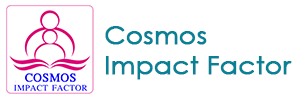
Journal Basic Info
- Impact Factor: 1.809**
- H-Index: 6
- ISSN: 2474-1655
- DOI: 10.25107/2474-1655
Major Scope
- Family Medicine and Public Health
- Endocrinology
- Orthopedic Sugery
- ENT
- Orthopedics & Rheumatology
- Emergency Medicine and Critical Care
- Physiology
- Gastric Cancer
Abstract
Citation: Ann Clin Case Rep. 2021;6(1):1922.DOI: 10.25107/2474-1655.1922
Patient Exposure Dose in a Videofluoroscopic Swallowing Study
Yoshiaki Morishima, Koichi Chida, Yohei Inaba and Osamu Ito
Department of Radiology, Tohoku Medical and Pharmaceutical University Hospital, Japan Department of Radiological Technology, Tohoku University School of Health Sciences, Japan Rehabilitation Center, Tohoku Medical and Pharmaceutical University Hospital, Japan
*Correspondance to: Yoshiaki Morishima
PDF Full Text Case Report | Open Access
Abstract:
Objective: Videofluoroscopic Swallowing Studies (VFSS) are considered the standard imaging technique to investigate swallowing physiology and dysphagia. VFSS involves the use of X-rays, and there is increasing concern about patient radiation doses in VFSS diagnostic. A few studies have evaluated the dose of radiation a patient receives during VFSS; however, in these studies, the patient exposure dose was determined using a calculation from dose area product. Therefore, we investigated patients' actual Entrance Skin Dose (ESD) during VFSS using a fiberoptic sensor attached to the patient's skin for direct reading of the patient's ESD. Moreover, we examined the Effective Dose (ED) from ESD. In this study, we clarify the ESD during VFSS in clinic. Material and Methods: All examinations were performed using a consecutive fluoroscopy and Image Intensifier (I.I.). The control system for this equipment sets the X-ray exposure kV and mA automatically (67 kV to 97 kV and 0.9 mA to 2.5 mA). I.I. size was 10 inches. The source to I.I. distance was 148 cm, and the distance between the source and the patient entrance surface was approximately 90 cm to 100 cm. We used the dosimeter adheres directly to a patient's skin and displays the patient's ESD and dose rate in real time during radiological examination. We investigated 20 patients from October 2016 to April 2017. The technique used in our VFSS procedure differs from that used in the usual VFSS procedure. Results: The male: female ratio was 11:9. The average VFSS procedure time was 4.3 ± 1.4 min, and the average ESD was 18.6 ± 8.7 mGyper VFSS procedure. In addition, the average ED was 0.9 ± 0.4 mSv. The correlation coefficient between fluoroscopy time and ESD was R2=0.39 (p<0.01). Conclusion: Our findings showed that the potential risk from radiation exposure in VFSS is lower compared with other common radiological investigative methods. ESD in patients undergoing VFSS and this technique helps evaluate ED in a more efficient way. We showed that the dose received by patients in significantly low; therefore, we propose that VFSS can be used as a low-risk diagnostic method.
Keywords:
Videofluoroscopy; Patient’s entrance skin dose; Deglutition disorders; Effective dose
Cite the Article:
Morishima Y, Chida K, Inaba Y, Ito O. Patient Exposure Dose in a Videofluoroscopic Swallowing Study. Ann Clin Case Rep. 2021; 6: 1922..













